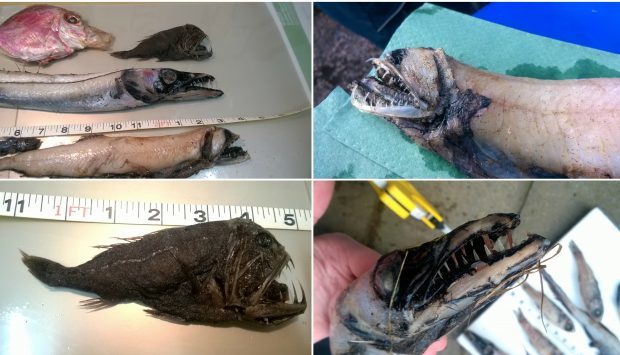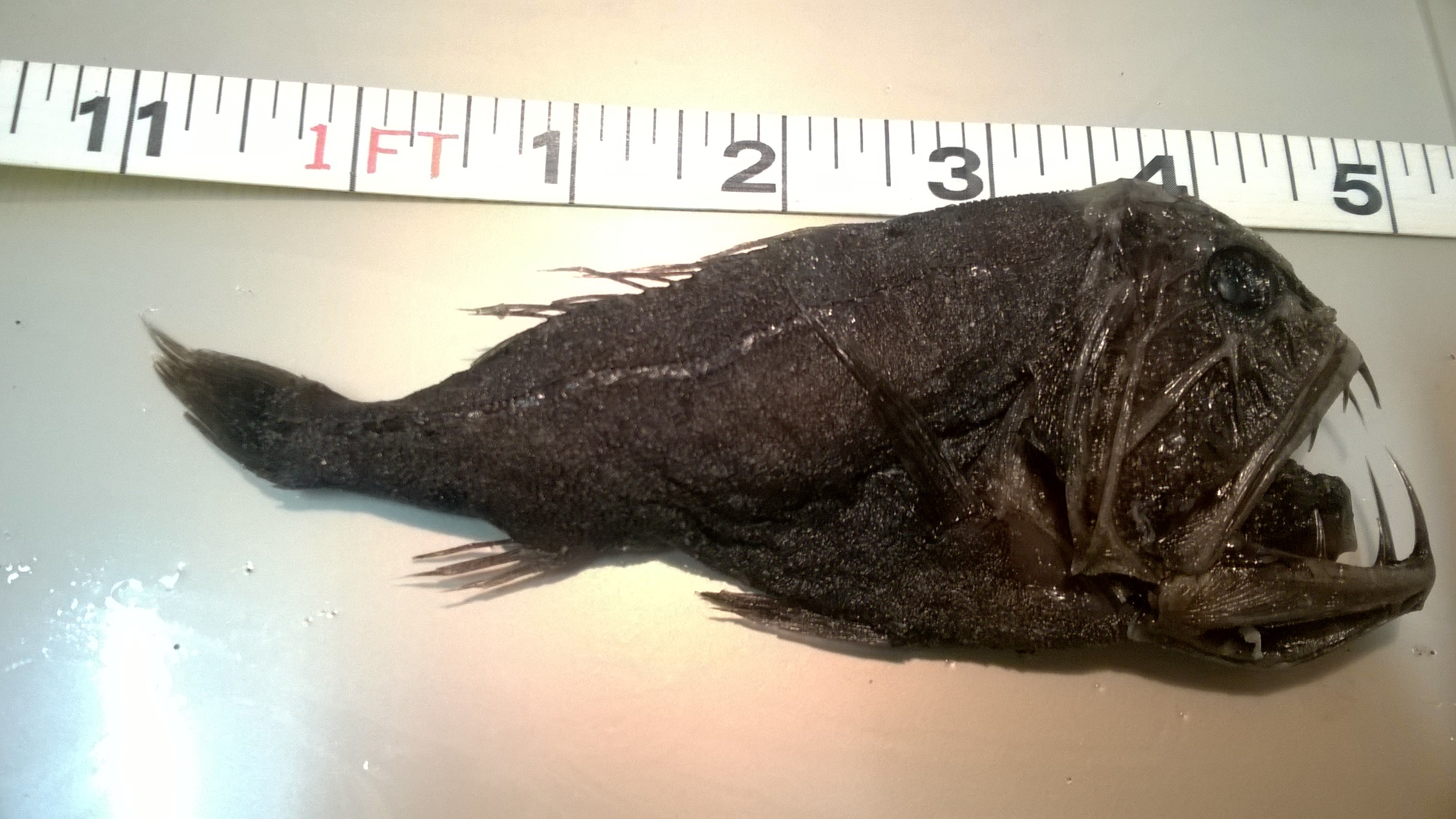These astonishing pictures show a collection of unusual deep sea creatures which confused wildlife experts after they washed up on a beach.
The creatures were discovered by a teenage boy at St Cyrus in Aberdeenshire.
Examinations revealed they were 10 different species which inhabit some of the ocean’s murkiest depths.
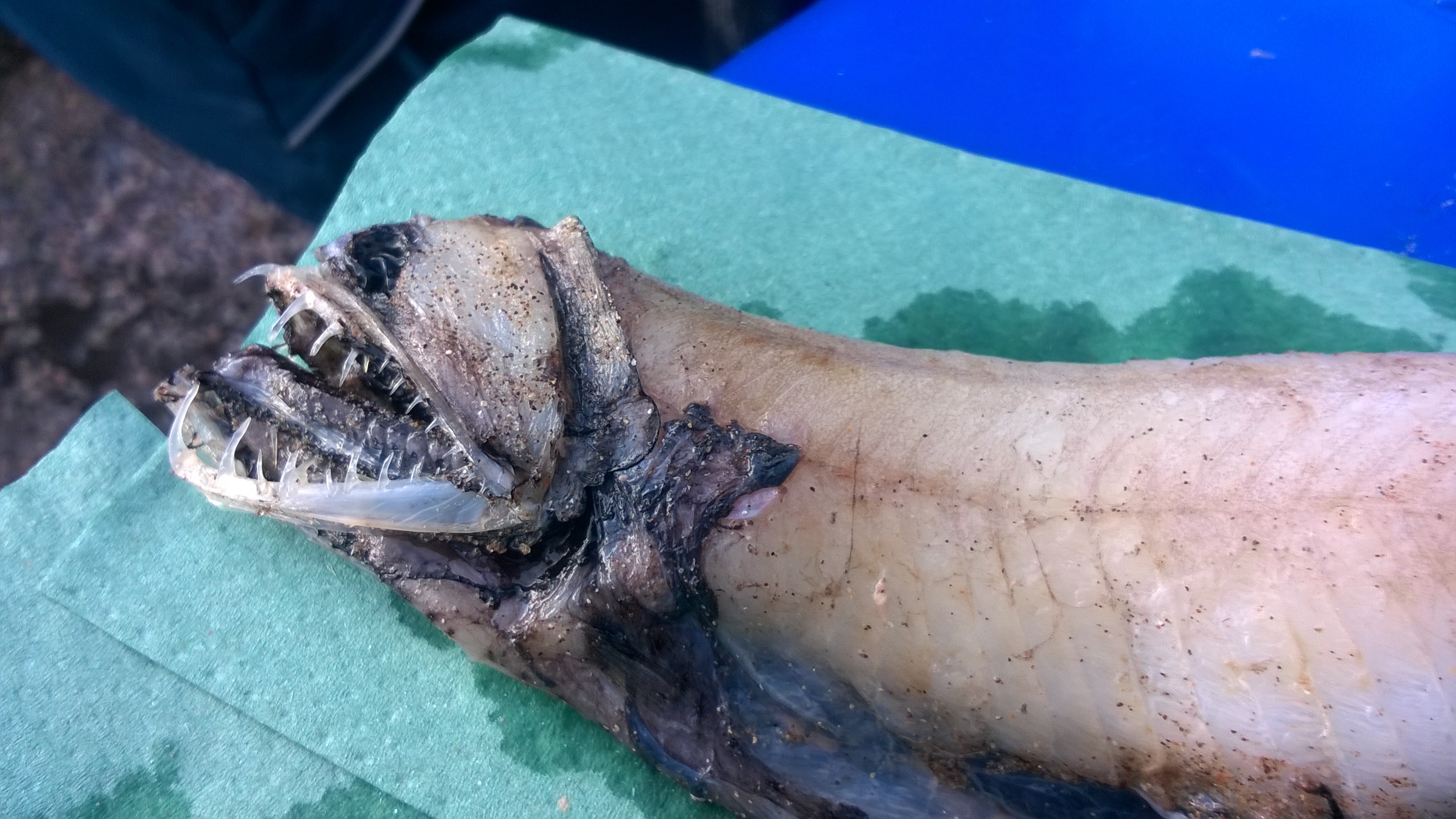
The unexpected find included an alien-looking fangtooth and a fierce dragon fish predator which swims at its prey, skewering them on impact with its needle-like teeth.
Two types of chimaera or ghost shark, which are rarely seen by human eyes due to living at depths plunging as far as 2km below the surface, were also found.
There were also viperfish, pink dory, black scabbard, lantern fish and hatchet fish.
Therese Alampo, manager at St Cyrus National Nature Reserve, which is run by Scottish Natural Heritage, says she could not believe her eyes.
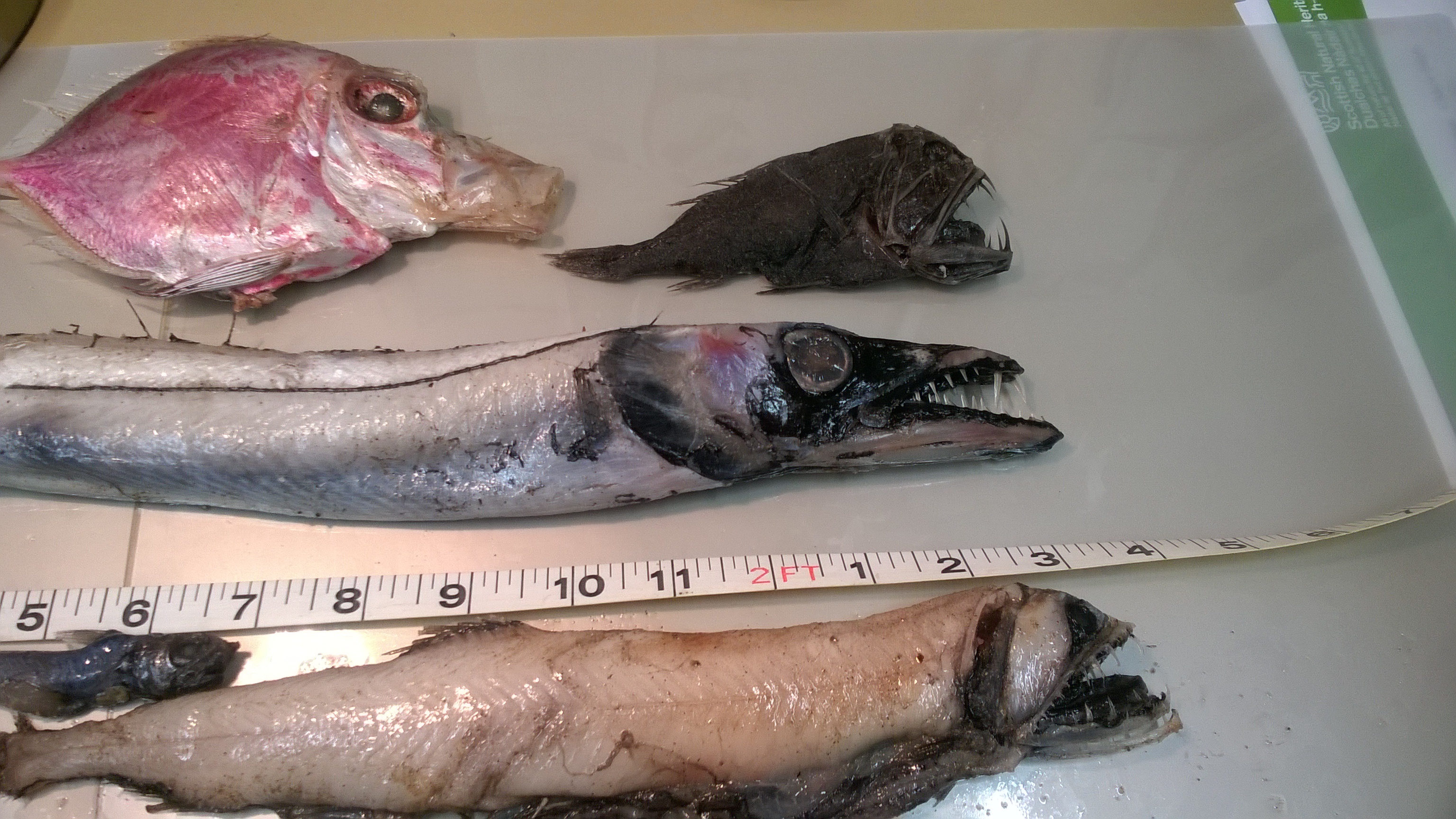
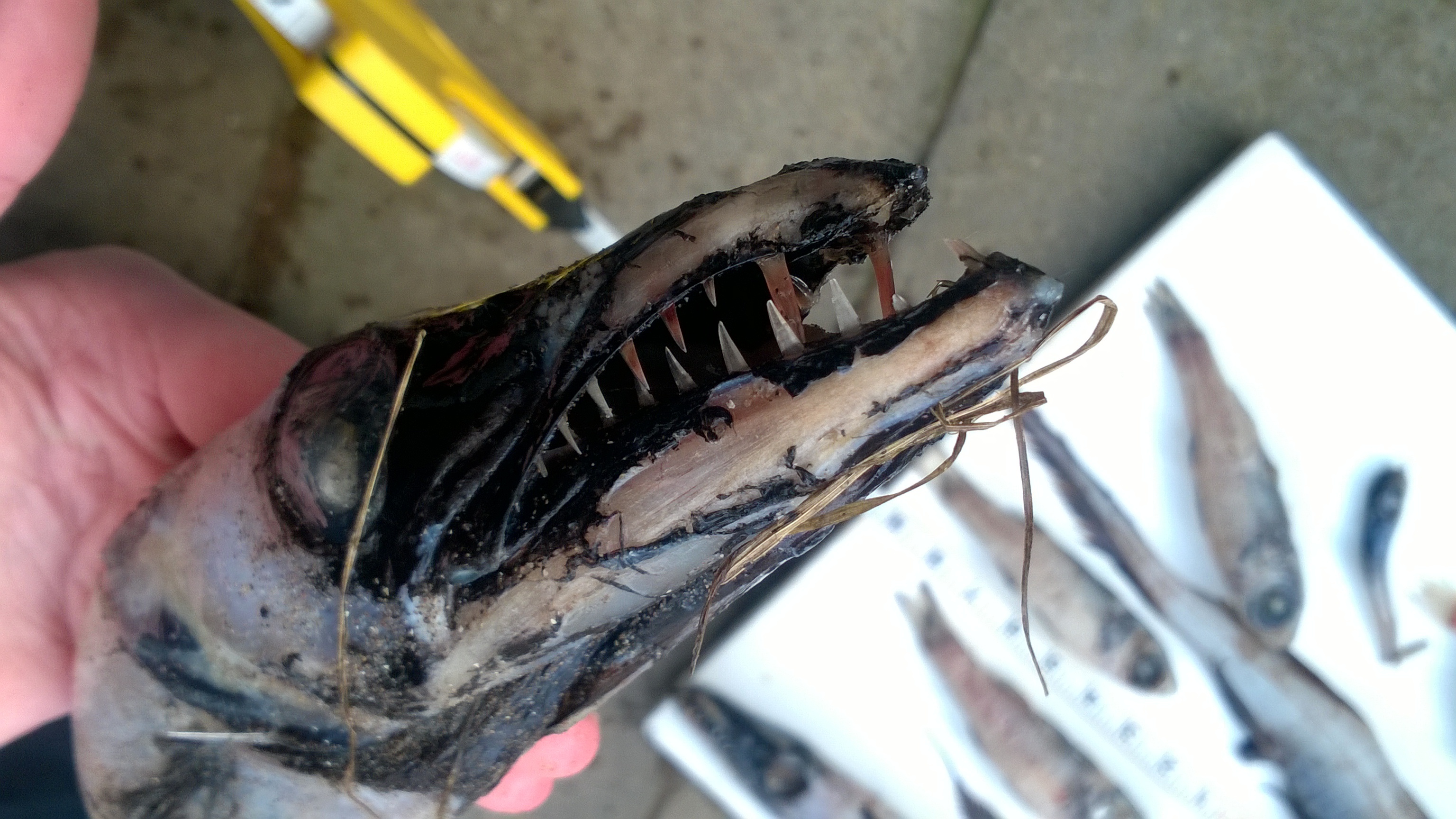
She was brought the weird and wonderful fish to identify by conservation volunteers Jobrul Chamberlain and Bob Kirkpatrick.
“They’re always bringing me stuff to look at and we’ve had some rare wildlife sightings in the past but this is amazing,” she said.
“I’m still very excited. They had never seen anything like it and knew there was something interesting here, so they brought them back.
“We knew they were deep sea fish but we didn’t know how they had come to be here.
“We’ve got this collection of deep sea creatures, it’s absolutely incredible.
“There were about 15 fish in all.
“My colleague Andrew Ferguson came from Aberdeen and we spent the evening recording and measuring them.
“I also got in contact with the Shark Trust, who were so helpful.
“They were also amazed and very excited about the chimaera in particular.”
She added: “People are so fascinated by the ocean.
“And people were amazed that these were Scottish sea fish, so it was really special to show people these creatures do exist in Scottish waters.
“It really is a dream come true for me.”
It turns out the fish had been taken to the beach by a marine scientist, who had caught them in deep water west of Shetland as part of a research project and taken them to St Cyrus to show to his children.
The specimens got swept away by the sea, only to wash up again later.
